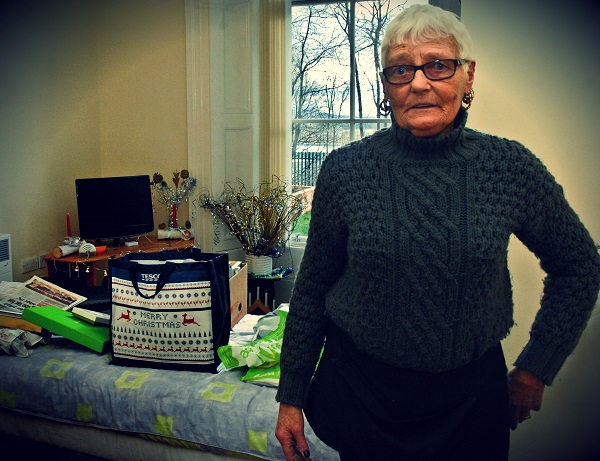People who have lived in an area for a short time may be unaware of past floods and the potential for future flooding

Credit: JRF/Eloise Ross
Communities with a high rate of change in their populations are more vulnerable to the impact of climate change and extreme weather events than communities where the population is more stable. High rates of change and population transience are well recognised characteristics of particular geographical areas, such as coastal towns and can be part of a range of characteristics which increase vulnerability in an area, such as insecure, low income employment, poor housing and physical and social isolation1. Transient populations are highlighted as one of the groups of concern for service providers in health and social care and for whom specific actions may be required in view of heightened vulnerability.
Communities where population turnover is high may be less aware of the likelihood of being affected by events like floods, how to respond and where to seek support. People may also be living in rented accommodation which is less well adapted than might be the case if associated with a more stable population. More information about issues associated with rented accommodation can be found here. In local areas where the population is transient or turnover is high, it may be necessary to consider more frequent provision of information and community engagement activities in order to ensure appropriate levels of local knowledge.
High rates of transience may also be associated with particular groups or areas where there have been high rates of inwards migration from overseas. Indeed, some of these migrants may also be affected by climate change related impacts in their countries of origin2. Responses need to recognise the potential for new arrivals to an area to have difficulty understanding the English language and some of the complex terminology which can be associated with adaptation measures.
People living in areas with high transience may also lack social connections to friends and neighbourhoods in the local community3. People with fewer social networks may struggle to maintain continuity of treatment in relation to physical or mental health treatments4. Where social networks are relatively good there is evidence of a better response to emergency situations and quicker recover5.
Some transient populations are not fully recognised in official statistics or infrequent data collection exercises such as the UK Census of Population. Such populations may be part of marginalised and socially isolated groups, such as the homeless. Homeless people are more likely to be in poor health than the wider population and have other reasons for increased vulnerability, such as increased likelihood of being exposed. Although some measures of population turnover and other related factors such as the proportion of residents born overseas can be mapped and help explain some of the patterns of vulnerability seen in the UK6, additional local sources of information will also be needed in order to fully understand the extent and nature of issues in a particular area and to help with the design of appropriate responses. Additional data may need to be gathered in collaboration with organisations working in the voluntary and community sector.
Developing measures should involve partnership work with dedicated groups already working with target groups in the voluntary and community sectors, e.g. the NCVO who have worked with other organisations like the Red Cross and Equinox to help support adaptation. Community engagement and partnership working are recognised as important ways to ensure that designing, establishing and deploying adaptation measures can be as effective as possible.
This summary highlights that there is a need to consider the specific needs of people and communities where there is a high degree of transience as part of the process of building more climate resilient communities. In this first version of the ClimateJust resource it has only been possible to provide a short overview of available evidence and outline a small number of the possible actions which might be taken in response. However, other parts of the resource provide additional relevant information and complement the information provided here. They provide further evidence, case studies and examples, list other possible actions, outline guidance on how actions might be achieved and connect you to other tools and resources. To find out more, consult the additional resources on:
-
Recommended general actions
-
Guidance for effective working through partnerships and community engagement,
-
Specific recommendations associated with other vulnerable groups. This is important as many of the factors affecting which people and places are more vulnerable to the impacts of climate change and extreme weather events are interconnected. The most extremely vulnerable people and communities will be those who have multiple causes for their vulnerability, for example where there are high rates of transience coupled with other factors affecting vulnerability such as high proportions of older people, people in poor health, people living on low incomes and people living in certain types of housing.
-
Mapped indicators, including maps of some of the possible measures of transience in your local area against which you can map additional local data.



